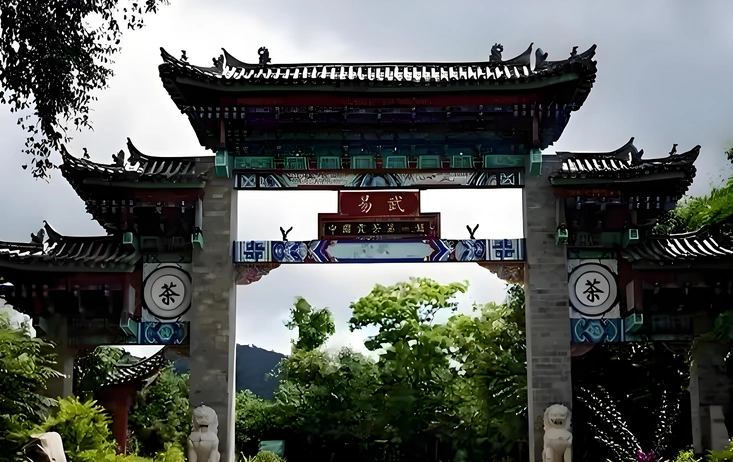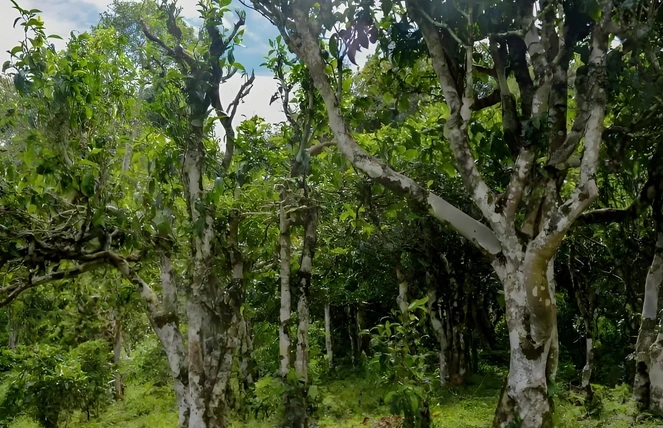Raw Pu-erh tea is not just a beverage; it’s an adventure in a cup. From the misty mountains of Yunnan to the earthy aroma that rises as you steep the leaves, raw Pu-erh is an invitation to experience tea with your senses, heart, and heritage. For tea lovers seeking authenticity, complexity, and a connection to nature, raw Pu-erh tea offers a rich narrative and a ritualistic joy that’s hard to match.
Unlike ordinary teas, raw Pu-erh transforms over time, deepening in flavor, character, and charm. Whether you’re drawn to its slightly bitter opening notes or the sweet lingering aftertaste, this ancient tea provides more than hydration—it delivers emotion, memory, and energy. So, let’s journey through the forests of Yunnan, explore its iconic tea mountains, and uncover the soul of raw Pu-erh tea.
1. What Is Raw Pu-erh Tea?
Raw Pu-erh tea, also known as “Sheng Pu-erh,” is an unfermented form of Pu-erh made from sun-dried tea leaves. It is pressed into cakes, bricks, or left as loose-leaf Maocha, and naturally ages over time.
What makes raw Pu-erh tea unique is its living nature—its taste changes year after year, developing smoother, richer tones. Freshly pressed raw Pu-erh is bold, grassy, and slightly astringent. With age, it becomes mellow, sweet, and complex, much like aged wine.
The tea is made from large-leaf varietals grown in Yunnan, China, often in remote, high-altitude regions. These leaves are prized for their strength and aromatic potential, making raw Pu-erh a connoisseur’s delight.

2. How Raw Pu-erh Tea Is Made
Crafting raw Pu-erh tea is a delicate dance between tradition and terrain. The process includes:
- Handpicking Large-Leaf Tea: Often plucked from ancient tea trees in Yunnan’s renowned regions like Yiwu or Bulang Mountain.
- Withering & Kill-Green (Shaqing): The leaves are wilted and pan-fired to stop oxidation.
- Rolling (Rounian): Gently hand-rolled to shape and break cell walls.
- Sun-Drying: Naturally dried under the sun to preserve enzymatic activity.
- Compression: Leaves are pressed into cakes (Bingcha), bricks (Zhuancha), or left loose.
Each step influences the final character of raw Pu-erh tea—from its vibrant aromas to its aging potential.
3. Flavor Profile of Raw Pu-erh Tea
Imagine a cup that awakens your senses—a light bitterness that gives way to floral sweetness, a texture that feels silky yet energetic. Raw Pu-erh tea delivers a layered experience:
- Young Raw Pu-erh: Bright, vegetal, with notes of green herbs and stone fruit. It can have astringency, with a cooling after-feel in the throat.
- Aged Raw Pu-erh: Smooth, woody, and deep, offering flavors like honey, dried dates, or sandalwood.
Many tea drinkers describe a “Cha Qi” or tea energy—an invigorating feeling that’s both uplifting and meditative.
4. Health Benefits of Raw Pu-erh Tea
Raw Pu-erh tea isn’t just a sensory delight—it also offers functional wellness benefits:
- Rich in Antioxidants: Especially catechins and polyphenols that may combat oxidative stress.
- Supports Digestion: Especially after oily meals—raw Pu-erh tea stimulates enzymes and bile flow.
- Mental Clarity: Contains moderate caffeine balanced by L-theanine for focused alertness.
- Boosts Metabolism: Traditionally used for maintaining body weight and reducing water retention.
While it’s not a miracle drug, daily enjoyment of raw Pu-erh can complement a holistic, healthy lifestyle.
5. Famous Regions: Yiwu and Bulang Mountain Pu-erh
Yunnan is home to many legendary tea regions, but none more celebrated than:
- Yiwu Mountain: Known for its soft, gentle raw Pu-erh with floral and honeyed aromas. Yiwu teas are elegant and calming, perfect for those new to raw Pu-erh.
- Bulang Mountain: Produces bold, powerful raw Pu-erh with a bitter backbone and long-lasting sweetness. The flavor is often described as earthy, spicy, and deep.
These regions not only offer taste differences—they reflect distinct terroir and ancient culture.

6. Loose Leaf, Cake, Brick, or Tuo: Which One?
Raw Pu-erh comes in many shapes, each with unique advantages:
- Loose Leaf (Maocha): Great for beginners. Easy to portion, faster to age.
- Tea Cakes (Bingcha): Most popular for aging. Compressed for convenient storage.
- Brick Tea (Zhuancha): Denser compression, excellent for long-term cellaring.
- Tuocha (Bowl-Shaped): Traditional form with rich historical charm, often used for gifting.
The form doesn’t change the tea’s quality but affects how it ages and how convenient it is to brew.
7. Brewing Raw Pu-erh Tea: Unlocking Its Soul
Brewing raw Pu-erh is a mindful ritual. Here’s how to do it right:
- Water: Use filtered or spring water, ideally 95–100°C.
- Teaware: Gongfu-style teapots or gaiwan bring out the best flavors.
- Ratio: 5–7 grams for 100–150 ml of water.
- Rinsing: First rinse quickly to awaken the leaves.
- Steeping: Begin with short infusions, 10–20 seconds, gradually increasing.
Observe the evolving aroma, color, and mouthfeel—it’s a spiritual journey with every cup.
🔗 For more tea brewing methods, check out the YouTube video explaining the brewing methods.
Conclusion: Why Raw Pu-erh Tea Matters
Raw Pu-erh tea is more than a trend. It is a reflection of heritage, patience, and the natural world’s quiet wisdom. From the ancient trees of Bulang to the elegant subtleties of Yiwu, raw Pu-erh connects you to centuries of craftsmanship and serenity.
Whether you’re sipping it for its flavor, its meditative calm, or its healthful properties, one thing is certain—raw Pu-erh tea is a timeless treasure in a modern world.



